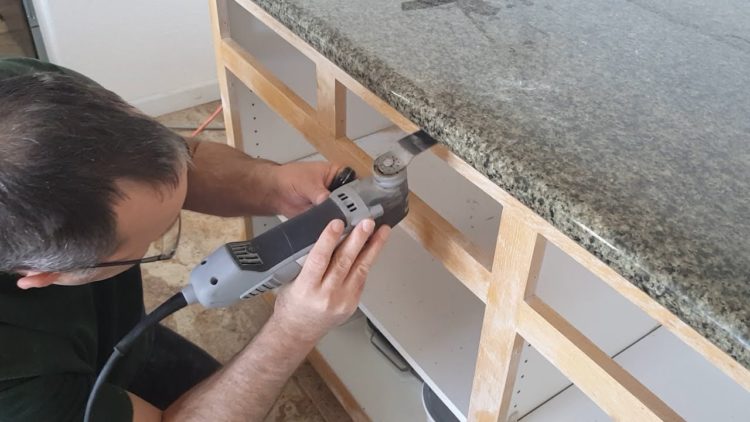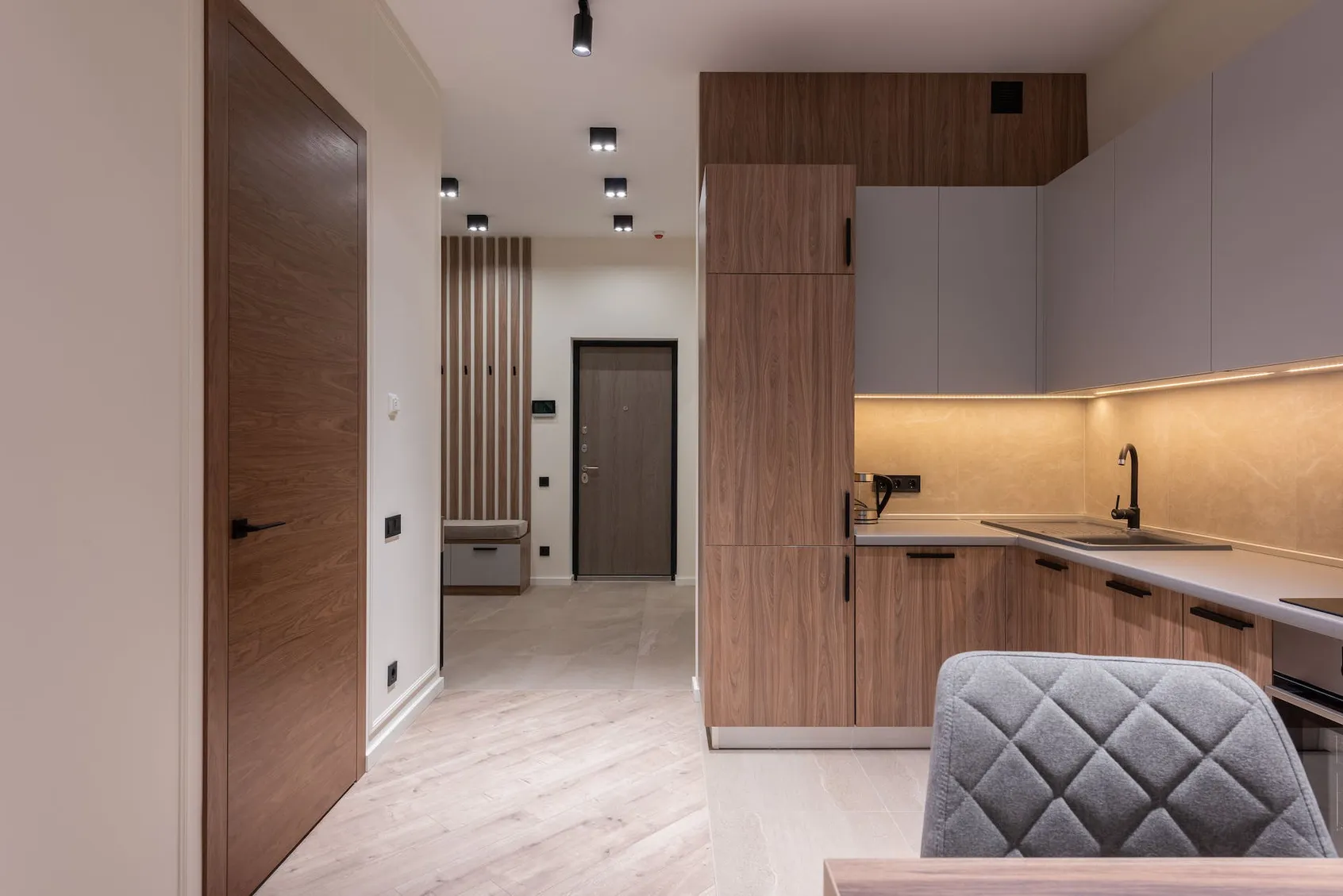Understanding the Challenges

Replacing kitchen countertops without damaging cabinets is a delicate dance of precision and patience. It requires a keen understanding of the materials involved, the potential pitfalls, and a toolbox filled with the right tools.
Common Challenges
This seemingly straightforward task presents several challenges, especially when dealing with older or intricate cabinetry.
- Tight Spaces: Navigating cramped areas, particularly around sinks and appliances, requires careful maneuvering to avoid bumping or scratching cabinets.
- Delicate Cabinet Finishes: Many cabinets boast intricate details and finishes that can easily be marred by careless handling. From painted surfaces to intricate wood veneers, even a minor scrape can ruin the aesthetic appeal.
- Water Damage: Water is a constant threat during countertop replacement. Spills and leaks can seep into the cabinet structure, causing warping, swelling, and long-term damage.
Essential Tools and Materials
To successfully tackle this project, a well-equipped toolbox is essential.
- Measuring Tape: Accurate measurements are crucial for ensuring a proper fit for the new countertop.
- Level: Ensuring the new countertop is level is crucial for both aesthetics and functionality.
- Circular Saw: Used for cutting the countertop to size and creating precise edges.
- Jigsaw: For intricate cuts around sinks and appliances, providing flexibility in tight spaces.
- Safety Gear: Gloves, eye protection, and a dust mask are essential for protecting yourself from potential hazards during the process.
- Silicone Caulk: Creating a watertight seal between the countertop and the backsplash is crucial for preventing water damage.
- Clamps: Used to secure the countertop in place while the adhesive dries, ensuring a stable and secure installation.
Preparation and Removal

Before embarking on the countertop replacement project, meticulous preparation is essential. This involves disconnecting appliances, protecting surrounding areas, and carefully removing the old countertop without damaging the cabinets. By following these steps, you can ensure a smooth and successful transition to your new countertop.
Preparing the Existing Countertop for Removal
Prior to removing the old countertop, it is crucial to disconnect any appliances connected to it. This includes the sink, faucet, and any built-in appliances like a dishwasher or stovetop. Disconnect the water supply to the sink and ensure all appliances are unplugged.
Once the appliances are disconnected, protect the surrounding areas from potential damage. Cover the floor with drop cloths or plastic sheeting to prevent debris and spills. Additionally, use masking tape to protect the walls and cabinets from scratches or paint chips.
Removing the Old Countertop
Now, you can proceed with removing the old countertop. Here’s a step-by-step guide:
- Locate the countertop seams. Countertops are often made in sections and joined together with seams. These seams can be identified by looking for a visible line or change in texture.
- Start at a seam. Begin the removal process at a seam to make the task easier. Use a utility knife or a reciprocating saw to cut through the countertop along the seam line.
- Carefully pry the countertop up. Once the seam is cut, use a pry bar or a chisel to carefully pry the countertop up. Work slowly and steadily, applying even pressure to avoid damaging the cabinets.
- Remove the countertop in sections. If the countertop is large, remove it in sections. Start with the smaller pieces and work your way towards the larger ones.
- Dispose of the old countertop properly. Once the countertop is removed, dispose of it properly according to your local regulations.
Assessing the Condition of the Cabinets, Replacing kitchen countertops without damaging cabinets
After removing the old countertop, carefully inspect the cabinets for any damage. Look for cracks, scratches, chips, or warping. If you find any damage, repair it before installing the new countertop.
- Cracks and scratches. Small cracks and scratches can be repaired with wood filler. Apply the filler to the damaged area, let it dry, and then sand it smooth.
- Chips. Chips can be repaired with epoxy resin. Mix the resin according to the manufacturer’s instructions and apply it to the chipped area. Let it dry and then sand it smooth.
- Warping. Warping can be difficult to repair. If the warping is minor, you may be able to straighten it out with clamps and wood glue. If the warping is severe, you may need to replace the cabinet.
Installation and Finishing: Replacing Kitchen Countertops Without Damaging Cabinets

The installation of your new countertop is the culmination of your hard work and planning. It’s a critical step that requires precision and care to ensure a beautiful and functional finish. This section will guide you through the process, from aligning and securing the countertop to applying the finishing touches.
Installing the Countertop
The installation process will vary depending on the material of your new countertop. Here’s a general overview:
- Aligning the Countertop: Before securing the countertop, ensure it’s perfectly aligned with the cabinets and walls. Use shims or leveling wedges to adjust the position and achieve a level surface. This step is crucial for both aesthetics and functionality.
- Securing the Countertop: The method for securing the countertop depends on its material and the type of cabinets. For example, granite and quartz countertops are often secured with adhesive and clamps, while laminate countertops may be secured with screws or clips. Consult the manufacturer’s instructions for specific details.
- Sealing the Countertop: Many countertop materials, such as natural stone, require sealing to protect them from stains and water damage. Apply a sealant according to the manufacturer’s instructions. The sealant creates a protective barrier that repels liquids and prevents staining.
Handling Different Countertop Materials
Each countertop material has its unique installation considerations:
- Granite: Granite is a dense, durable natural stone that requires careful handling during installation. It’s heavy and prone to chipping, so use proper lifting techniques and protective padding. The installation process typically involves cutting, polishing, and sealing the granite to ensure a seamless and polished finish.
- Quartz: Quartz countertops are engineered stone that offers high durability and stain resistance. They’re generally easier to install than natural stone because they’re less prone to chipping and breakage. The installation process involves cutting, fitting, and securing the quartz countertop to the cabinets.
- Laminate: Laminate countertops are a budget-friendly option that’s relatively easy to install. They typically come with pre-cut edges and can be secured with screws or clips. The installation process involves cutting the laminate to size, attaching it to the countertop base, and applying a sealant to the edges.
Finishing Touches
Once the countertop is installed, it’s time to add the finishing touches:
- Caulking: Apply a bead of silicone caulk along the edges of the countertop where it meets the walls and backsplash. This helps prevent water damage and creates a clean, finished look.
- Cleaning: After installation, thoroughly clean the countertop to remove any dust, debris, or sealant residue. Use a mild cleaning solution and a soft cloth.
- Protecting the Countertop: Once the countertop is clean, apply a protective sealant according to the manufacturer’s instructions. This will help maintain the countertop’s appearance and prevent staining.
Replacing kitchen countertops without damaging cabinets requires precision and patience, much like creating a serene sanctuary in your bedroom. For inspiration on achieving a calm and peaceful atmosphere, check out these zen inspired bedroom ideas. Just as a well-designed bedroom can promote relaxation, a carefully executed countertop replacement can enhance your kitchen’s functionality and aesthetics without compromising the integrity of your cabinets.
Replacing kitchen countertops without damaging cabinets can be a delicate dance, requiring precision and care. Just like adding a wood panel wall bedroom can transform the ambiance of a room, a new countertop can revitalize your kitchen. With the right tools and techniques, you can achieve a flawless update without sacrificing the integrity of your cabinets, leaving you with a beautiful and functional space.